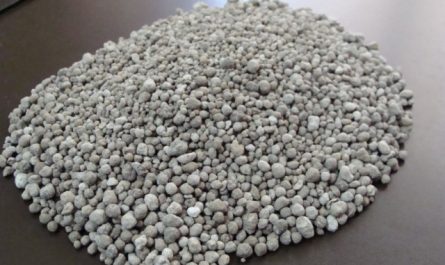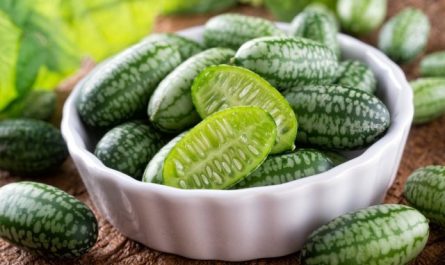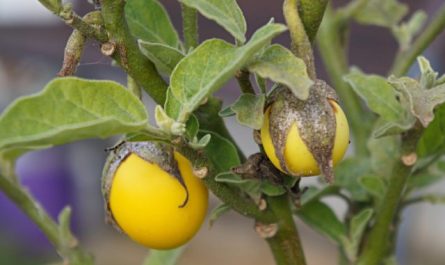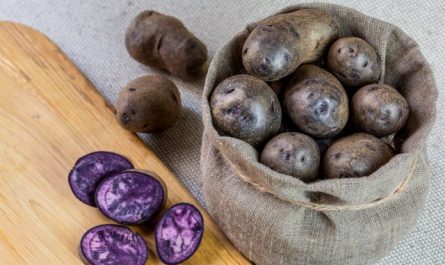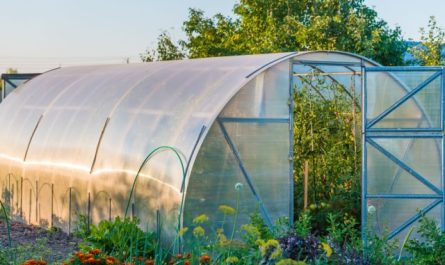Among the favorite vegetable crops in our gardens, radish is relatively rare. At the same time garden radish (Radish sativus L.) has many cultural forms that are successfully grown all over the world. Among them, the most well-known ones are black radish, large white radish (daikon), Chinese Margilan radish (Lobo), green radish, sweet radish, sowing radish, oilseed radish and others. In the article, we will tell you why radish is worth growing and what features its agricultural technology has.

Do you need radishes in your garden?
Our gardeners have undeservedly deprived radish of attention. In Ancient Greece, it was considered the queen of vegetables and was widely cultivated in their northern possessions. In China, radish has been grown as one of the main vegetable crops since ancient times. Currently, radish and its varieties are again receiving significant attention in all countries. And for good reason.
The roots of all garden radish varieties contain vitamins, macro- and microelements, essential oils, fiber, amino acids, more than 6% sugar and 2,5% proteins. All parts of the vegetable are rich in lysozyme, which has a strong bactericidal effect.
Radish is used in medicine to treat cough, gastritis, liver and gall bladder diseases, dyspepsia and other diseases. Radish juice is a good wound healer. Essential oils are obtained from the seeds, which are used in industry and cosmetics and other areas of the national economy.
What kind of radish can be grown in garden beds
Radish black
It is the most common in the CIS, compared to other varieties. A biennial crop, forming a root crop weighing from 200 to 350 g in the first year, and seeds in the second. Late-ripening. It is sown in late summer-early autumn. Root crops in technical maturity are harvested in a month.
The root of black radish is covered with black skin, the pulp inside is white, slightly bitter and has a sharp taste due to the large amount of mustard oil. It is used in the diet in fresh and processed form. At home, radish juice with honey is used for bronchial diseases, loss of voice (in singers), dyspepsia, arthritis. Black radish is used for long-term storage.
Best varieties for growing: “Night”, “The Queen of Spades”, “Winter Black”, “Murzilka”.

Chinese radish (Lobo)
Lobo is also called Margilan radish. Root crops are round, cylindrical or elongated. The root crop can be light or dark green, pink-red, purple-lilac and other colors or shades.
A distinctive feature of this radish from other species is the dark green color of the upper part of the root crop. Its pulp can be from white to pink-red. The taste is not spicy, reminiscent of radish, can be classified as neutral, which makes it possible to use lobo in food for liver diseases. It promotes rapid healing of purulent wounds and removes toxins and salts from the body.
Best varieties for growing: “Red Heart” (like a watermelon inside, green on top, no bitterness, keeps perfectly all winter). Other varieties that can be recommended for cultivation include “Elephant’s Tusk”, “Pink Ring”, “Oktyabrskaya-1” and “Oktyabrskaya-2”, “Margelanskaya”.
Green radish
A variety of Lobo can be considered green radish. Sometimes in everyday life, gardeners call green radish also Margilan. Its homeland is Uzbekistan, where it is as widespread as black radish in the regions of Russia.
It tastes tender, pleasant, without pronounced bitterness and pungency. The root crop is oblong, less often round. The skin is two-colored: white from the root, and turns light green towards the head. There are also other shades of the root crop.
It is distinguished by a high content of mineral salts, fiber, sugars. It has a high nutritional value. It is irreplaceable in dietary nutrition. Varieties of green radish (for example, “Green Goddess”) summer, not suitable for long-term storage.
Large white radish, daikon
Daikon (Japanese radish) is gaining more and more recognition among gardeners. It is valued for its excellent taste, high yield, and unpretentiousness in cultivation. The root crop is long and cylindrical. The skin is white, the flesh is juicy, sweetish, with a slight bitterness. It tastes like radish.
There are many varieties and hybrids of daikon radish with different ripening periods – from several days (they are used immediately) to several months (without losing taste). Not only root vegetables are eaten, but also young leaves and seeds. Daikon is used to prepare independent dishes, added to salads and soups.
Best varieties for growing: “White Fang”, “Japanese Long”, “Sasha”, “Russian Size”, “Big Bull”, “Minowase”, “Tokinashi”, “Miyashige”, “Kameida”, “Nerima”, “Ninengo”.



Radish
Radish is the most popular crop among all types or varieties of radish. Early maturing varieties provide the earliest vitamin vegetables.
Root crops, compared to other varieties of radish, have small sizes – from 2,5 cm to 4-5 cm. The shape of the root crop is from round to elongated, similar to carrots. The skin of the root crop is tender, mainly red in color with various shades. The pulp is from soft, crispy to dense, the taste is noticeably spicy.
Late-ripening varieties are grown for long-term storage (up to 4 months in a cellar or basement). The rest are used fresh immediately after harvesting.
Best varieties for growing: “French Breakfast”, “Heat”, “Red Giant”, “Early Red”, “Zlata”, “Red with a White Tip”, “Icicle”, “Deca”, “Goddess”.
It is impossible to list all varieties of radish within the article. We have mentioned the most common varieties of the vegetable crop, which have high quality indicators.
In addition to the varieties of radish used as a garden vegetable, gardeners everywhere grow another one – oil radish – inedible for humans, but very useful in the household.
Oil radish
Oilseed radish does not form edible roots and is used by gardeners as a forage plant or green manure. The crop tolerates moisture deficiency, temporary temperature drops well, and can be grown on clay soils.
In a short period, the plant forms an above-ground mass up to 1,5-2,0 m in height and a powerful root system. The root, which penetrates deeply into the soil, acts as an excellent loosener and simultaneously enriches it with microelements during its decomposition.
Rapid growth of the above-ground mass suppresses the development of weeds, and the root system suppresses the soil nematode. A good honey plant. The seeds contain a high percentage of vegetable oil, used in pharmacology, cosmetology and even cooking.
For use in the household the most popular varieties: “Sabina”, “Tambovchanka”, “Nika”, “Rainbow”, “Beauty”, “Brutus”.


Agricultural technology for growing radishes
Radish varieties belong to the group of vegetables that are propagated mainly by sowing seeds in open or closed ground, and in some regions sowing is carried out under temporary shelters.
The agricultural technology for growing any variety of radish is very similar. The differences are mainly traced in the sowing dates and the quality indicators of root crops and seeds.
To grow a high-quality crop of radish roots, it is necessary to comply with the agrotechnical requirements for cultivation, which include:
- timely sowing in open ground, greenhouse, under temporary shelter;
- selection of a variety adapted to regional conditions (zoned varieties);
- determining the purpose of a variety or hybrid (summer consumption, shelf life).
When to sow radishes
All varieties of radish are short-day plants, the light duration of which should be less than 12 hours. With longer lighting, the plants very quickly go through the light stages of development and bloom by mid-summer. At the same time, the root crop becomes coarse, even woody and is not suitable for food.
Therefore, to obtain a good harvest of root crops, it is better to sow radishes in the second half of summer, when the length of daylight hours begins to decrease. Early varieties that form a harvest of root crops in 1-2 months can be sown in early spring, when the daylight period is quite short (for example, radishes).
Each variety of radish can be divided into 3 groups of varieties according to the time of technical maturity of root crops: early ripening, mid-season and late ripening.
Early-ripening varieties Sown in the southern regions in the first half of March – until mid-April (depending on weather conditions). Early varieties in the central zone, Moscow region and further north are sown in the first-second ten days of April (under cover) and harvested already in the third ten days of May – early June.
The so-called “flowering” (i.e. flowering of the plant, which leads to deterioration of the quality of the fruit) does not occur within 1,5-2 months. The harvest has time to form, but it is not high. Root crops weigh within 230-300 g. Harvesting of root crops in technical maturity is carried out in 40-45-50 days.
Medium-ripening varieties Sow in the southern regions in the second half of April-first half of May, in the north – in the first half of June. Root crops are harvested after 70-90-100 days. If a mid-season variety is intended for storage, it is best to sow it in late July-early August in the south, and in the north – in late June.
Late-ripening varieties (they are also called winter) are sown depending on the region at the end of July-first half of August. The harvest of root crops is carried out after 90-120 days (end of October), necessarily ahead of the onset of permanent frosts.
It is better to sow radishes intended for winter storage in the first ten days of July and harvest them after 4 months (before the onset of frost).
In northern regions, when sowing directly into open ground, it is more appropriate to grow mid-season and late varieties.

Choosing a place for sowing
Radish is a sunny crop and when grown in the shade, its yield sharply decreases. It is frost-resistant and can withstand temperatures from -2 °C (post-emergence young seedlings) to -7 °C (developed plants).
Radish feels comfortable in open, ventilated areas. It can be planted as a separate crop in vegetable beds, compacted beds with garlic, onions and other crops that have the same requirements for growing conditions, watering, protective measures and fertilizing.
The best soils for radishes are loams and sandy loams with a neutral or slightly acidic reaction. Radish does not tolerate stagnant water, so it is better to choose elevated areas.
Soil preparation
If radishes are grown in crop rotation, the best predecessors are nightshades, zucchini, squash, cucumbers, garlic, and peas.
When sowing in spring, the soil is prepared in the fall. When sowing in the second rotation in the summer (depending on the previous crop), the soil does not need to be fertilized, but only dug to a depth of 25-35 cm, depending on the size and shape of the root crop (round, like radish, black radish or long-cylindrical, like daikon) and then fertilized.
Manure worsens the quality of root crops, so fresh organic matter is added under the previous crop, and humus and mature vermicompost are added directly under the radish at a rate of 0,3 buckets per 1 m² of area.
If the soil is highly fertile, then they limit themselves to adding medium doses of complete mineral (nitroammophoska, nitrophoska) or phosphorus-potassium fertilizer (potassium sulfate) during digging at 20-30 g/m² of area and 0,5 cups of wood ash.
Seed preparation
Seeds almost always have a high germination rate. When harvesting seeds yourself, they must be calibrated and disinfected in a pink solution of potassium permanganate before sowing. You can soak the seeds before sowing, but this is not necessary. Purchased seeds usually do not need additional preparation.
Sowing
The seeds are sown on a windless, cloudy day in rows along pre-marked furrows. The distance between rows is, depending on the variety, 20-25-30 cm, and in a row – 12-15 cm. The furrows must be sufficiently moistened (but not flooded with water).
The depth of seeding is up to 3 cm. 2-4 seeds are placed in a hole to leave the strongest seedling after germination. Radish does not tolerate thickening, so during the growing season, 1-2 more thinnings are carried out. The soil under the radish should always be moist and sprinkled with ash, which saves the shoots from the cruciferous flea beetle.

Radish Care
To obtain quality root crops, it is necessary to maintain high humidity after sowing and up to 2 weeks after germination, then switch to watering (but not abundantly, once a week). To keep moisture in the soil longer, cover the bed with film before germination. Then mulch the soil after watering with peat or mature humus.
The first thinning is carried out 7-9 days after germination, and the second and, if necessary, the third – as the plants grow. If the root crops are cramped, they will be small and crooked.
Timely loosening and weeding are very important. It should be remembered that soil compacted by watering delays the normal development of root crops.
Feeding
During the growing season, radishes are fed twice:
- the first time in the cotyledon leaflet phase; prepare a solution of Kemira or ammonium nitrate at the rate of 20 g per 10 l of water and treat 3-4 m² of area with it;
- The second feeding is carried out in the phase of 3-4 leaves; 30 g of nitrophoska, azofoska, or “Kemira” are added per 1 m² of area; wood ash can also be added to the second feeding.
Stop feeding 3 weeks before harvesting.
Protecting radishes from pests and diseases
The main pests of radish are cruciferous flea beetles, cabbage white butterflies, stem and root nematodes, cabbage aphids, cabbage leaf beetles, wireworms, mole crickets, and slugs.
The safest way to combat insect pests is to use bioinsecticides (strictly according to recommendations). Biological preparations do not harm the health of humans, animals and birds.
For nematodes, you can use “Aversectin-C”, “Pecilomitsin”. For wireworms – “Nemabakt”, “Entonem-F”, “Biodan”. “Lepidocid”, “Bitoxibacillin” and others successfully destroy pests.
From folk remedies you can use against leaf-eating pests, aphids, fleas, infusion of potato tops, decoction of tomato stepsons or infusion of chamomile. To combat fleas, pollinate plants with tobacco dust or celandine powder.
The most common diseases affecting radish include downy mildew, powdery mildew, phomosis, black leg, vascular bacteriosis, cabbage mosaic, red and white rot, clubroot and some others.
The safest way to use biofungicides in your garden plot, as well as for protection against pests, are: Trichodermin, Trichocin, Alirin-S, Baktofit, Ampelomycin, Fitobakteriomycin.
The following biofungicides are effective when used simultaneously with soil and plants: Gliokladin, Fitosporin-M, Gamair, Fitoverm, Bisolbifit, Alirin-B.
Plants and soil are treated in strict accordance with the recommendations.

Harvesting and storing radishes
The radish is carefully dug up, shaken off the soil, and the tops are cut off, leaving 4-5 cm at the base. This technique helps to retain moisture in the root crop. The harvested root crops are carefully and accurately sorted.
The root crops selected for storage are dried in the shade with good ventilation and transferred to a permanent storage location. During storage, radishes do not lose their useful and medicinal properties. Only those varieties that are marked “For storage” are used for long-term storage.
The shelf life of early varieties of radish does not exceed 7-20 days. They are immediately used for food. They can be stored simply in an open container for up to 5-7 days. It is convenient to store in a polyethylene bag at a temperature of +2…+3°C and air humidity within 95-97% in cellars and basements, in the refrigerator.
Mid-season varieties are usually stored in cellars and other cool rooms with a temperature of +2…-1°C and air humidity of no more than 95%. Root crops are stored in thick cardboard boxes with holes on the top and sides or in small wooden boxes, sprinkled with slightly damp sand, in layers of 5-8 cm. The shelf life is from 1 to 2-3 months.
Late-ripening varieties tolerate long-term winter storage best. Root crops are stored in cellars, vegetable pits and other specially prepared rooms at a temperature of +2…–3°C, air humidity within 82-87% in bulk or in boxes. With proper preparation, the shelf life can last up to 200 days.



